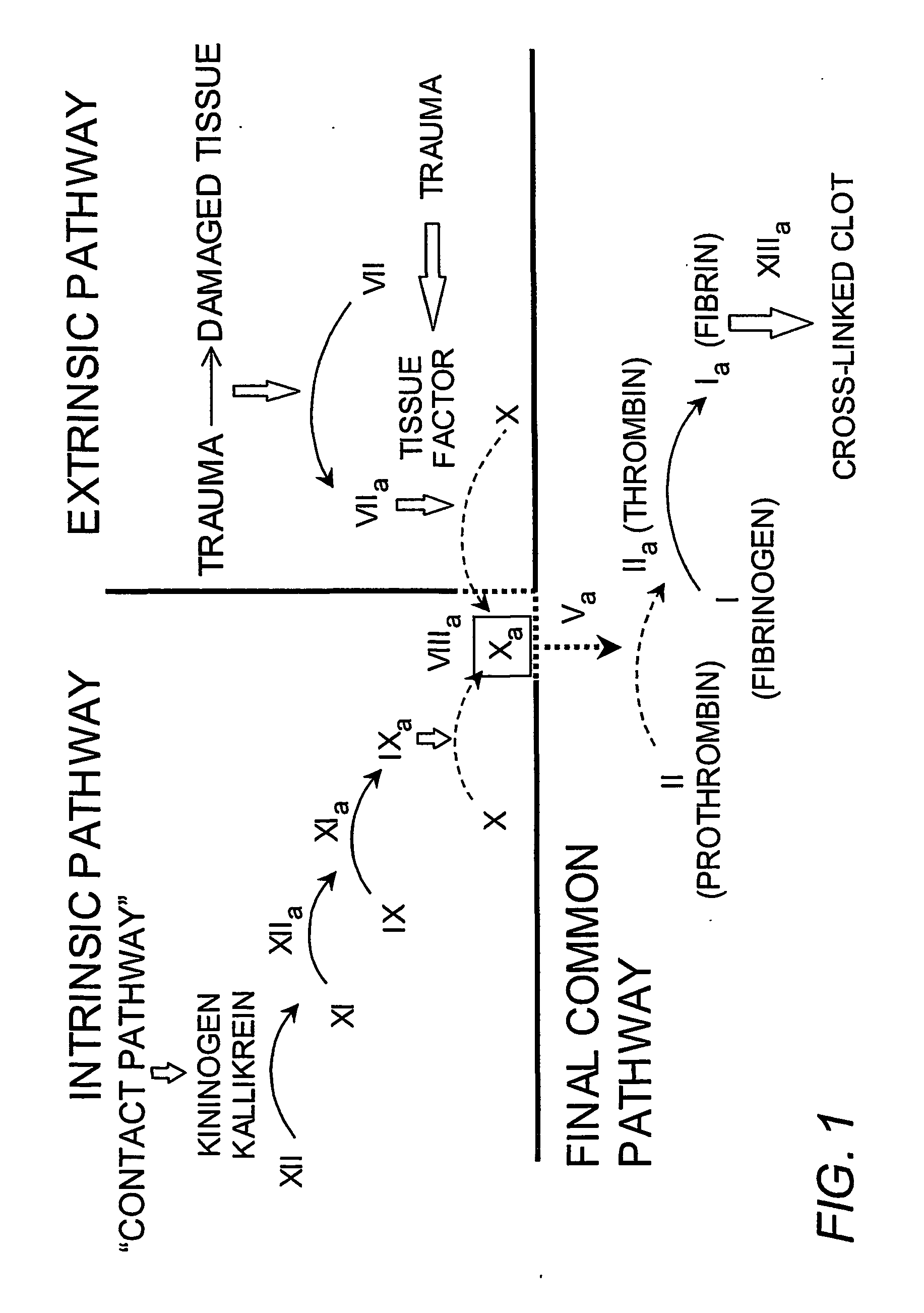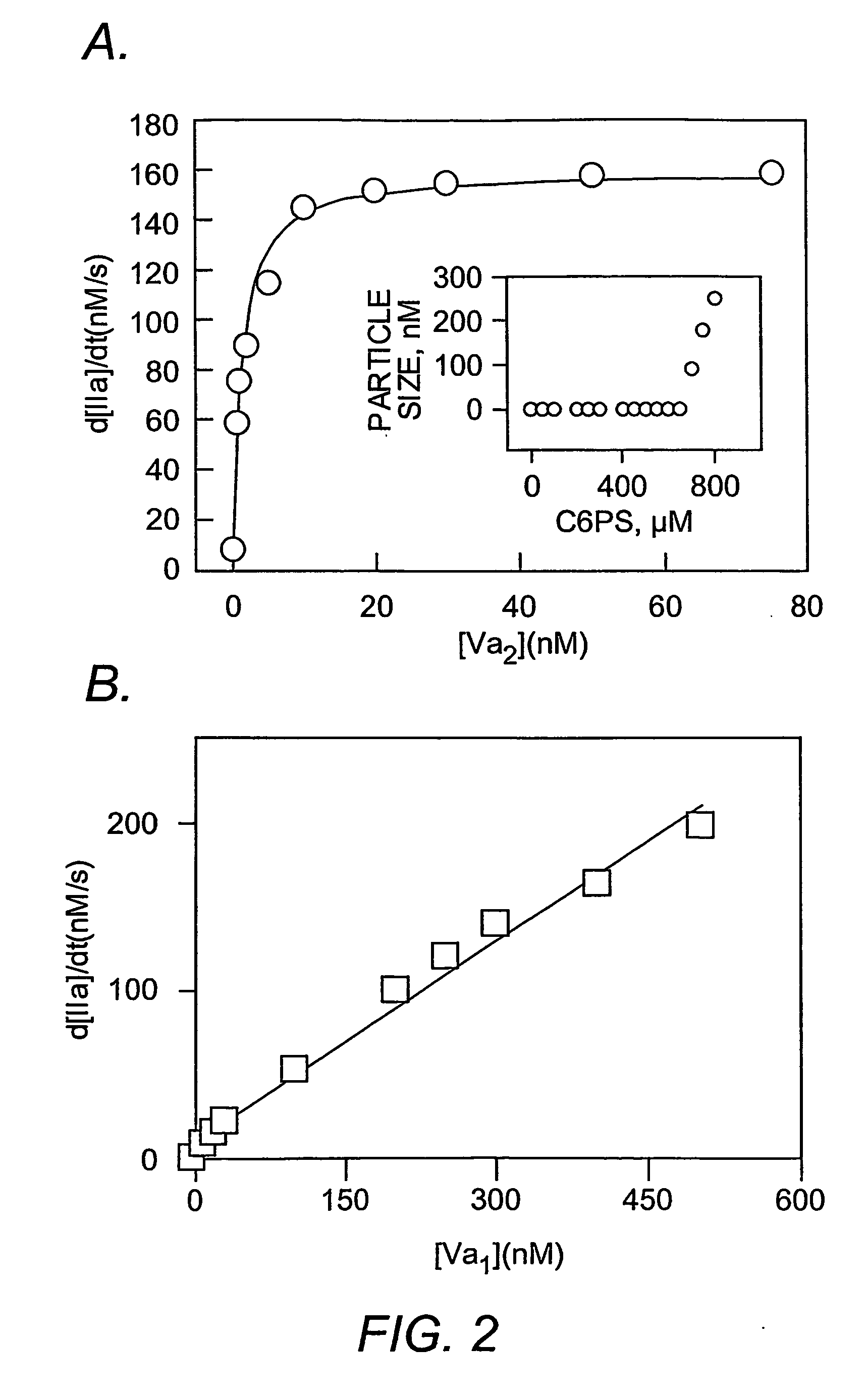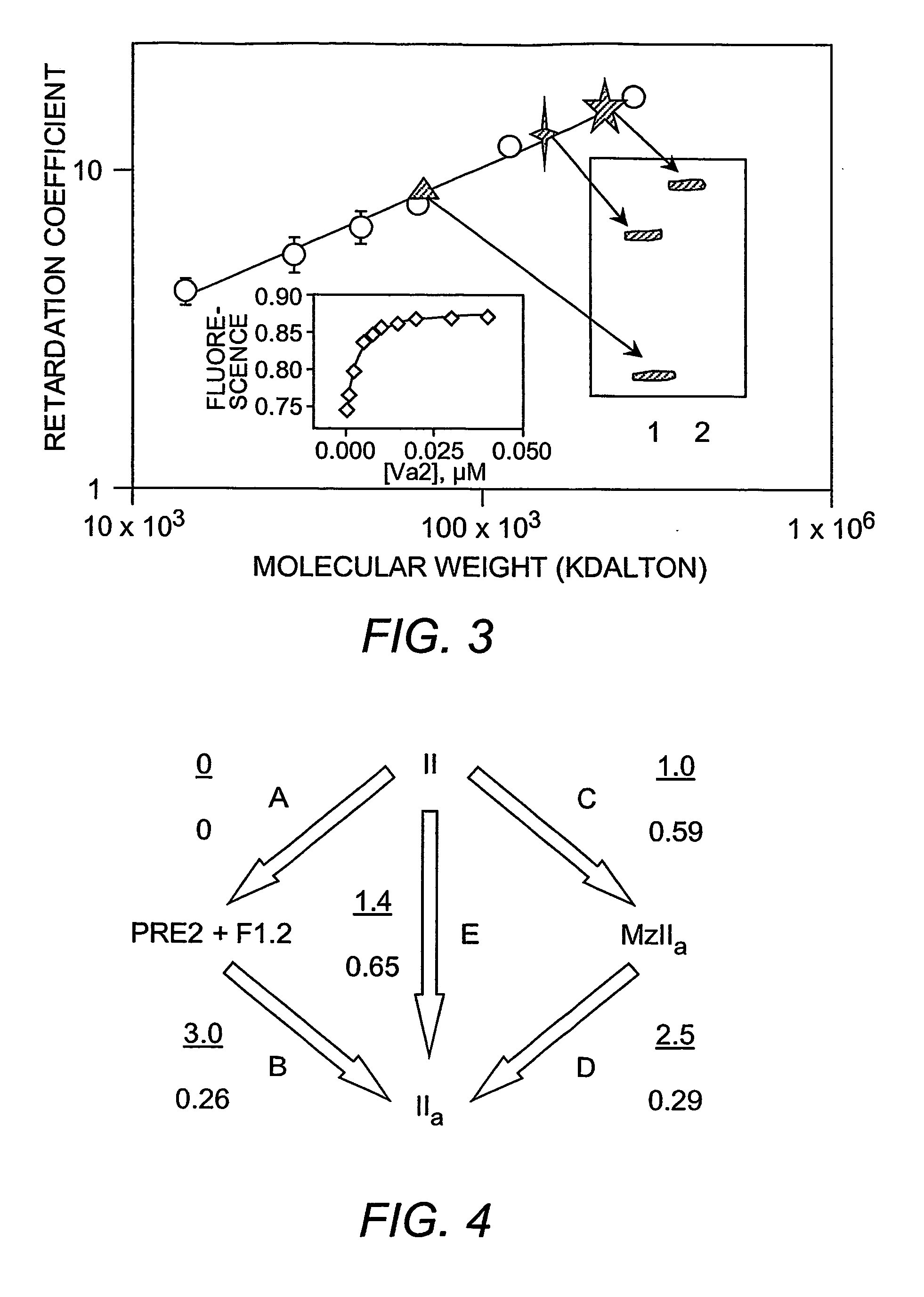Soluble phospholipids for use in clotting factor assays
a technology of soluble phospholipids and clotting factor assays, which is applied in the direction of microorganism testing/measurement, material analysis, biochemistry apparatus and processes, etc., can solve the problems of limited shelf life and labor-intensive production, and achieve the effect of reducing or eliminating interference, reducing the ability of a sample or subject to form a clot, and evaluating clotting activity
- Summary
- Abstract
- Description
- Claims
- Application Information
AI Technical Summary
Benefits of technology
Problems solved by technology
Method used
Image
Examples
example 1
C6PS Assembly and Regulation of Prothrombin-Generating Complex
Materials and Methods
[0155] Materials. Ecarin from Echis carinatus snake venom, heparin, and EGTA were purchased from SIGMA Chemical Company (St. Louis, Mo.). Dansylarginine-N-(3-ethyl-1,5-pentanediyl) amide (DAPA) was obtained from Hematologic Technologies Inc. (Essex Junction, Vt.). Thrombin-specific substrate, S-2238, and the factor Xa substrate, S-2765, were purchased from AB Kabi Diagnostica (Molndal, Sweden). 1,2-dicaproyl-sn-glycero-3-phospho-L-serine (C6PS) was purchased from AVANTI® Polar Lipids Inc. (Alabaster, Ala.), and stock solutions were prepared from the purchased chloroform stock using well-known methods (Banerjee, et al. (2002) Biochemistry 41(3):950-7). Human prothrombin and factor Xa and Pre2 and F1.2 were obtained from Hematologic Technologies Inc. (Essex Junction, Vt.), and MzIIa was prepared as described (Pei and Lentz (1991) Blood Coagul. Fibrinolysis 2(2):309-16). DEGR-Xa was prepared as descri...
example2
Factor X-Activating Complex
Results
[0173]FIG. 8 shows that the intrinsic tryptophan fluorescence of factor IXa changes with the addition of soluble C6PS in the presence of 5 mM calcium, suggesting that C6PS binds to factor IXa. The curve was fitted by a single binding site model (Equations 1 & 2 in Example 1) to obtain a stoichiometric Kd of about 1.3 μM. In order to make sure that a molecular form of C6PS, and not micelles, was causing this effect, the CMC of C6PS was determined (using ANS as a fluorescent probe) under the same experimental conditions (Koppaka et al. 1997 supra), and it was found to be 950 μM, which is much higher than the highest C6PS concentration used in this experiment (see the inset in FIG. 8). FIG. 9 shows the amidolytic activity (substrate Leu-PHG-Arg-pNA-AcOH, which does not depend on ethylene glycol) of 300 nM factor IXa in the presence of increasing C6PS concentration. A fit of these data to a single-site binding model gives a Kd of 130 μM. The 2 order ...
example 3
SPS Regulation of Factor Va Inactivation bv APC
[0179] APC cuts three bonds in the heavy chain of factor Va, one at Arg506 most rapidly, one at Arg306 less rapidly, and one at Arg679 that probably does not affect the loss of activity of the cofactor. Proteolysis at Arg506 leads to partial inactivation, but proteolysis at Arg306 is necessary for full inactivation (Kalafatis & Mann (1993) J. Biol. Chemistry 268 27246; Nicolaes et al., (1995) J. Biol. Chemistry (1995) 270 21158). Membranes containing negatively charged phospholipids (especially PS) promote proteolysis of all three bonds, but the largest effect of membranes is on the proteolysis at Arg306, a reaction that is very slow in the absence of membranes (kcat / KM=102 to 103 M−1sec−1 but increases to a rate of (kcat / KM=2-7×106 M−1sec−1 in the presence of PS-containing membranes (Nicolaes et al., J. Biol. Chemistry (1995) 270 21158; Hoekema et al. (1997) Biochemistry 36 3331; Egan et al. (1997) Protein Science 6 2016). We found t...
PUM
| Property | Measurement | Unit |
|---|---|---|
| Molar density | aaaaa | aaaaa |
| Molar density | aaaaa | aaaaa |
| Time | aaaaa | aaaaa |
Abstract
Description
Claims
Application Information
 Login to View More
Login to View More - R&D
- Intellectual Property
- Life Sciences
- Materials
- Tech Scout
- Unparalleled Data Quality
- Higher Quality Content
- 60% Fewer Hallucinations
Browse by: Latest US Patents, China's latest patents, Technical Efficacy Thesaurus, Application Domain, Technology Topic, Popular Technical Reports.
© 2025 PatSnap. All rights reserved.Legal|Privacy policy|Modern Slavery Act Transparency Statement|Sitemap|About US| Contact US: help@patsnap.com



